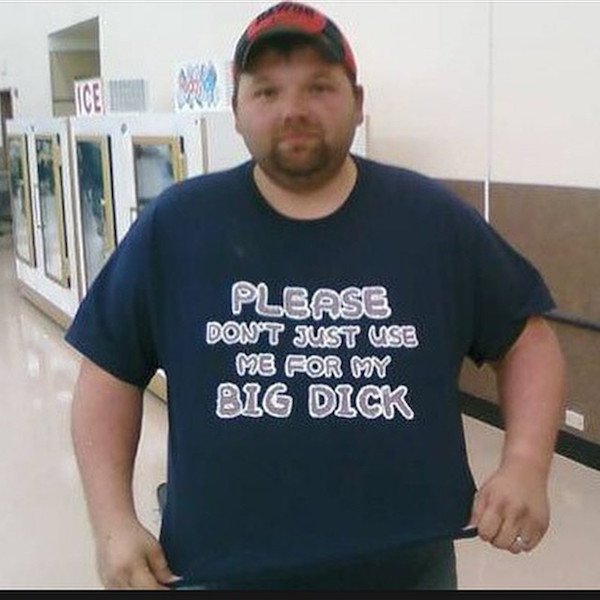Ever stumbled upon something so perplexing, so utterly baffling, that your immediate reaction was a resounding "WTF?" This isn't just a modern acronym; it's a primal scream, a digital shrug, a universal expression of bewilderment that transcends language barriers and cultural divides.
The internet, a vast and often chaotic landscape, has become the breeding ground for such moments. From the mundane to the truly bizarre, the web overflows with content designed to elicit that very response. Whether it's a photo that defies logic, a video that makes you question reality, or a news story that seems ripped from the pages of a dystopian novel, the "WTF" is always lurking, ready to pounce.
Consider this: you're scrolling through your feed, likely on a social media platform, and an image stops you cold. It might be a construction worker precariously balanced atop a skyscraper, a fashion choice that defies all aesthetic sensibilities, or a seemingly ordinary scene twisted into something deeply unsettling. The context is absent, leaving you to grapple with the sheer absurdity of the situation. The questions begin to flood your mind, and "WTF" is the only appropriate response.
Let's delve deeper into the phenomenon of "WTF," unpacking its nuances and exploring its various manifestations. We'll examine its etymology, its cultural significance, and the ways in which it has permeated our online and offline interactions. We will also see how "WTF" has become a valuable tool for connecting with others and sharing the experiences that make us uniquely human. We can use it to express our incredulity, our amusement, or even our outrage. The beauty of "WTF" lies in its versatility.
It has become a language unto itself. A shorthand for shock, confusion, and amusement. It can be a reaction to something extraordinary, to a moment that is outside the normal parameters of experience. It can also be a reflection of a particular perspective.
Now, let's take a closer look at how this expression, this reaction, has evolved within the digital realm.
The evolution of WTF showcases the evolution of internet culture, it reflects how we consume information and react to the world around us. This isn't just a simple phrase; its a cultural artifact. The digital age is filled with instant sharing, rapidly consumed information, and the constant search for the next viral moment. WTF fits perfectly into this landscape.
One of the primary platforms for "WTF" content is, of course, the internet. This is where the bizarre, the unexpected, and the downright strange are readily shared. Subreddits like r/WTF, and imgur, dedicated to the collection of these moments, become central hubs for the community to share and enjoy content. These online spaces are more than simple collections of images and videos; they are communities built on the shared experience of bewilderment.
Let's consider the evolution of the use of "WTF" and what we can infer from its prevalence. This is where we begin to move beyond the surface and explore the essence of the phrase's use.
The use of WTF has evolved from a private expression of shock to a shared cultural experience. This shift tells us that the digital world has not only changed how we find and consume information, but also how we form relationships. Online platforms facilitate communities built around shared interests and common experiences.
The rise of "WTF" can be also connected to the proliferation of user-generated content and the democratization of media. The ability to quickly capture and share events with a wide audience means we're constantly bombarded with a wider range of experiences. The "WTF" is often a response to the raw, unfiltered content that is shared online.
It's a testament to the power of the human experience. We connect through shared reactions and responses, and this is something that has been understood since the beginning of human history. It gives us a way to show that we're thinking and feeling, that we can be surprised, confused, and amused by the world. And that we're all in this together.
Furthermore, the "WTF" phenomenon highlights the role of context in understanding. Often, a seemingly absurd image or video requires additional information to make sense. The lack of context can lead to confusion and a sense of disconnect. This highlights the importance of critical thinking and the ability to evaluate information from various sources. This becomes essential in today's world.
Let's think about how "WTF" is linked to online communities. When we encounter something that's surprising or confusing, its natural to share that moment. This sharing creates an opportunity for discussion and interaction.
This sense of sharing goes beyond simple information. It fosters a sense of community. By expressing "WTF", users are connected to others who have had similar experiences. They validate each other's feelings. They share in the initial shock, and they begin to construct an understanding of the event.
It's a process of social learning, a way of understanding that is specific to our time. This leads us to think more about the way we engage with others. How do you create communities around shared experiences, and what's the value in these digital relationships?
The evolution of WTF is about more than a simple expression. It also says something about the role of humour in the digital age. Sometimes it's used to point out the absurdities of life. It's used to create laughter and a shared sense of amusement. This can be especially powerful in moments of stress or uncertainty.
Let's analyze some of the ways that the use of "WTF" has evolved over the years. In the beginning, it was primarily a way to express shock or confusion. It has become part of the online lexicon.
For example, the use of "WTF" gifs is very common. These visual elements express a range of emotions. This can make conversation more dynamic and emotionally resonant. They enhance communication and provide a shared language.
In addition to its function as a tool to connect with others, "WTF" has also been used to highlight the absurdity of political events, and even the behavior of politicians. It can be a tool for social commentary, a way of highlighting the flaws and foibles of those in power.
It's important to note the potential downsides of the constant exposure to "WTF" content. Over time, the constant stream of shocking or bizarre material can lead to desensitization. And, on a deeper level, this could affect ones ability to relate to the world.
There's also the risk of misinformation. With the easy sharing of images, videos, and other kinds of content, it's difficult to know the source and the context of the information.
It is important to have a critical perspective on "WTF" content. It can be used for a lot of positive things, but it is still very important to develop a sense of awareness. This involves being more involved in the content we engage with. It also requires us to be wary of misinformation.
It is useful to think more about the role of "WTF" in our individual lives, and in the lives of others. It becomes a way to connect with others. We see it as a tool for expressing shock and amusement, it also helps to connect with other human beings.
It is the ultimate expression of confusion. It is an abbreviation of a sentence that encapsulates the moment when you have come across a piece of information and can't comprehend it. When the event or content goes against what we understand about reality, the only response is: "WTF".
This expression has become so embedded in popular culture that many people will not even realize that it is a vulgarism. From your parents to your peers, they all say it without hesitation. It is part of the current internet vernacular.
WTF is a response to a world filled with chaos and complexity. When were overwhelmed, we turn to expressions such as these in an attempt to make sense of our experiences. It serves as a collective outlet to process the overwhelming complexity of the digital world.
In essence, "WTF" is a reflection of our humanity: our capacity for wonder, our ability to be shocked, and our need to connect with others through shared experiences. It's a reminder that, even in the face of the absurd, we are not alone.
The expression "WTF" is more than just an internet slang term; it is an integral part of our online and offline communications. We must explore how this expression has evolved and shaped the way we experience our daily lives.
Whether you are a veteran of the internet, or if you are just beginning to familiarize yourself with its workings, we can all learn from the evolution of this expression. It is a window into our society's development and the way we respond to change. It also shows how technology has shaped us, and how the human mind is constantly trying to make sense of an ever-changing world.
Let's consider how this simple expression has come to capture the very essence of our digital age. It can be an act of connection. It is a symbol of our need for community. It serves to make our digital experience more emotional and expressive.
So, the next time you encounter something that makes you say "WTF," take a moment to appreciate the cultural context that surrounds you. Its a reminder of the shared human experience and a testament to our ability to find humor and connection in the most unexpected places. It's a feeling that reminds us, in the face of an increasingly complex world, that we are not alone. So, keep calm, and don't be afraid to say "WTF."


